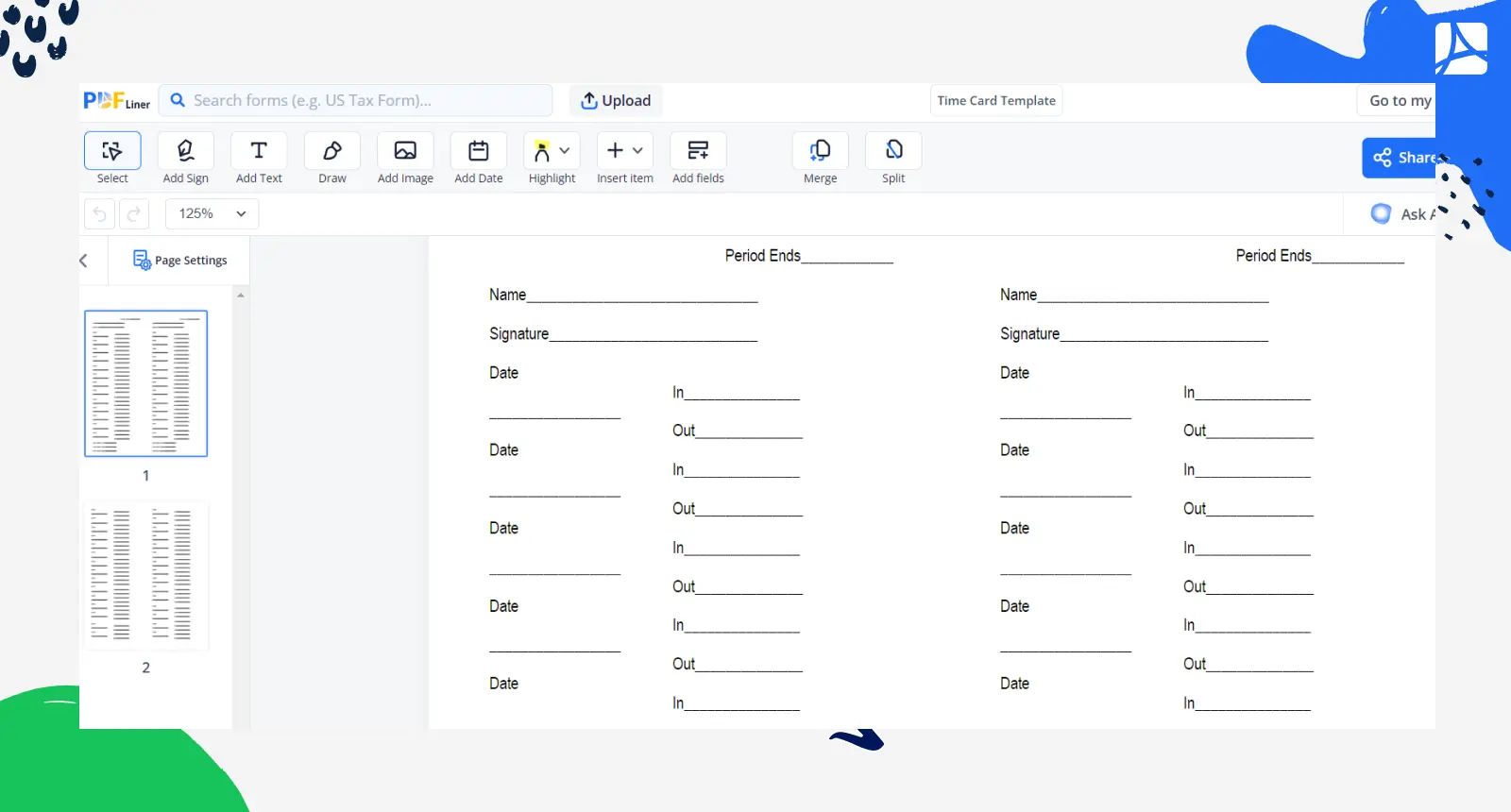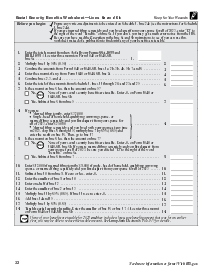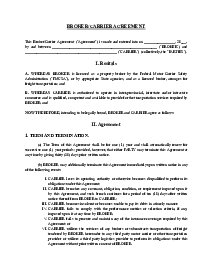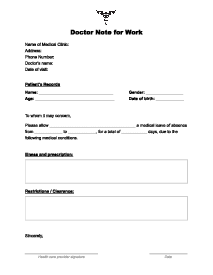-
Templates
1099 FormsAccurately report 1099 information returns and ensure IRS filing with easeExplore all templatesW-9 W-8 FormsEasily manage and share taxpayer details to streamline payments and meet IRS requirements with confidenceExplore all templatesOther Tax FormsFillable tax forms simplify and speed up your tax filing process and aid with recordkeeping.Explore all templatesReal EstateReal estate templates for all cases, from sale to rentals, save you a lot of time and effort.Explore all templatesLogisticsSimplify your trucking and logistics paperwork with our ready-to-use transportation and freight templates.Explore all templatesMedicalMedical forms help you keep patient documentation organized and secure.Explore all templatesBill of SaleBill of Sale templates streamline the transfer of ownership with clarity and protection.Explore all templatesContractsVarious contract templates ensure efficient and clear legal transactions.Explore all templatesEducationEducational forms and templates enhance the learning experience and student management.Explore all templates
-
Features
FeaturesAI-Enhanced Document Solutions for Contractor-Client Success and IRS ComplianceExplore all featuresAI Summarizer Check out the featureAI PDF summarizer makes your document workflow even faster. Ask AI to summarize PDF, assist you with tax forms, complete assignments, and more using just one tool.Sign PDF Check out the featurePDFLiner gives the opportunity to sign documents online, save them, send at once by email or print. Register now, upload your document and e-sign it onlineFill Out PDF Check out the featurePDFLiner provides different tools for filling in PDF forms. All you need is to register, upload the necessary document and start filling it out.Draw on a PDF Check out the featureDraw lines, circles, and other drawings on PDF using tools of PDFLiner online. Streamline your document editing process, speeding up your productivity
- Solutions
- Features
- Blog
- Support
- Pricing
How to Hire a Freelancer: 10 Simple Steps

Liza Zdrazhevska
If you’re planning to outsource work to freelancers, this post is right up your street. In this piece, we’ll dwell upon the pros and cons of hiring self-employed professionals, as well as provide useful tips, steps, and docs for succeeding in this endeavor. Stay tuned.

Pros and Cons of Hiring Freelancers
Looking to hire freelancers? It comes with significant advantages and drawbacks. Evaluate both before making a decision.
Here are the pros of hiring a self-employed professional:
- It’s cost-efficient. By hiring a self-employed pro, you’ll save lots of money on office space, equipment, and benefits typically associated with full-time employees.
- It speeds up project timelines. Freelancers start working immediately, which saves heaps of your treasured time.
- It gives you flexibility. Freelancers can be hired on a project-by-project basis, allowing for scalability as needed.
- It comes with diverse skill sets. Access a wide range of specialized skills and expertise from a global talent pool.
Working with freelancers does have drawbacks, though. Find them below:
- Commitment issues. Freelancers might not be as invested in your company's long-term success as full-time employees.
- Potential communication barriers. Differing time zones and communication challenges can hinder collaboration.
- Limited availability. High-demand freelancers may have tight schedules, causing delays.
Google has more freelancers (54%) than permanent employees (46%), according to recent stats. It's living proof of the fact that the benefits of hiring independent pros definitely outweigh the drawbacks.
How to Hire a Freelancer: Step-by-Step Guide

The intention of working with a freelancer is a strategic decision that can significantly benefit your project or business. Below, our experts have provided 10 steps to guide you through the process seamlessly.
1. Determine all the whats and whens
Begin by outlining the project's scope, specifying tasks, deliverables, and unique requirements. This clarity prevents misunderstandings and sets clear expectations for both you and the freelancer. Additionally, establish exact time frames, including project start and end dates, as well as any crucial milestones. These timelines create a structured framework, ensuring the freelancer effectively aligns with your project's schedule and objectives.
2. Set a realistic budget
Determine a budget that resonates with the project's scope and your financial resources. Consider the freelancer's rates, market standards, and additional costs. A realistic budget ensures you attract qualified freelancers while avoiding overextending financially. It's a critical step to strike a balance between quality work and cost-effectiveness.
3. Choose the right platforms or hiring method
Identify the most suitable platforms or methods for hiring freelancers based on your project's requirements. Options include freelancing websites like Upwork or Toptal, referrals, or working with agencies. Tailor your approach to the specific skills and expertise you seek.
4. Create a clear and concise job description
Creating an effective job description for freelancers requires clarity and conciseness. Begin with an engaging title that accurately reflects the role. In the description, provide a brief project overview, outlining specific responsibilities, required skills, and qualifications. Specify the project’s timelines and budget expectations. Encourage potential candidates to apply with clear instructions, and include your contact information for inquiries.
5. Review and shortlist candidates
Carefully review freelancer profiles and portfolios, paying attention to experience, skills, and past work. Assess their communication skills and responsiveness. Shortlist candidates who you feel will suit your project's requirements and demonstrate professionalism. Initiate conversations to discuss details, expectations, and availability.
6. Check references and reviews
Reach out to past clients or employers to gain insights into the work ethics and reliability of the freelancer(s) you’re currently planning to work with. Online reviews on freelancing platforms can also offer valuable feedback. Look for consistency in positive feedback and address any concerns or red flags.
7. Negotiate terms and draft a contract
Engage in open discussions with your selected freelancer(s) regarding project specifics, including results, timelines, and compensation. Ensure all expectations are clear and agreed upon. Draft a detailed contract that outlines these terms, payment schedules, and any additional clauses, protecting both parties' interests. Review and finalize the contract before work begins to avoid misunderstandings.
8. Onboard the freelancer and set expectations
Welcome the self-employed pro that has caught your eye by providing access to necessary resources, tools, and project-related information. Сlearly set your expectations regarding communication, reporting, and project milestones. Define the workflow, deadlines, and any review processes. That way, you will contribute to a smooth start and a shared understanding of project dynamics.
9. Track progress and provide feedback
Consistently keep tabs on the freelancer's work against the established milestones and deadlines. Provide constructive feedback and guidance when needed. Regular communication fosters collaboration and ensures the project stays on course. Acknowledging achievements and addressing concerns promptly maintains a positive working relationship.
10. Complete the project and consider long-term cooperation
Upon finalizing the project, conduct a thorough review to ensure the results meet expectations. If satisfied, express your appreciation and discuss the possibility of future projects or an ongoing partnership. Building a long-term relationship with a reliable freelancer can lead to cost-effective and consistent support for your business.
Must-Have Documents to Hire a Freelancer
Before hiring a self-employed professional, a company needs to ensure all necessary documentation is in order. These documents play a vital role in establishing a clear and legally sound working relationship. Whether you're bringing on a freelance writer, designer, or developer, having the right paperwork in place helps protect both your business and the freelancer.
Here are the docs needed for hiring a freelancer:
1. Freelancer Contract
.webp)
Utilizing a freelancer contract is paramount when hiring a freelancer as it provides a solid legal framework. This document outlines key aspects of the working relationship, including project scope and timelines, along with payment and confidentiality terms. A well-structured contract protects both parties from potential disputes, misunderstandings, and breaches of agreement. It ensures that expectations are clear and enforceable, promoting a smoother collaboration and safeguarding the interests of the company and the freelancer.
2. Non-Disclosure Agreement

It’s a critical document in freelancer hiring, especially when sensitive information is involved. NDA safeguards a company's confidential data, trade secrets, and proprietary information from unauthorized sharing or disclosure by the freelancer. This legal contract establishes trust and ensures the freelancer is legally bound to maintain confidentiality, protecting the company's competitive advantage and reputation while fostering a secure environment for collaboration.
3. W-9 Form

The fillable W9 serves a crucial role in the freelancer hiring process by ensuring abidance by tax regulations. It collects the freelancer's taxpayer information, including their name, address, and Social Security Number or Employer Identification Number. This document is vital for the company's tax reporting obligations, helping to accurately report payments made to the freelancer. It ensures legal and tax compliance, minimizing the risk of potential tax issues for both the company and the freelancer. Properly completed W-9 forms are essential for transparent financial transactions in freelance arrangements.
4. Form 1099-NEC

Also known as Non-Employee Compensation, the form is a vital document for businesses hiring freelancers. It reports any payments of $600 or more made to freelancers during the year, ensuring compliance with IRS regulations. 1099NEC Form helps the company accurately report income paid to freelancers and assists specialists in meeting their tax obligations. It is essential for tax transparency, avoiding penalties, and ensuring both the company and the freelancer fulfill their tax responsibilities in accordance with the law.
5. Time Card

It is a valuable tool when hiring freelancers, particularly for hourly or time-bound projects. It helps track the freelancer's working hours, ensuring accurate payment for their services. Time cards provide transparency and accountability in remote working relationships, offering evidence of work completed and hours spent. This document can also serve as a basis for project evaluation and billing. Utilizing time cards establishes a structured work arrangement, promoting efficiency, fairness, and trust between the company and the freelancer.
Bear in mind that the templates of all these freelance forms are available for free in the PDFLiner’s document catalog. Make the most of it and save heaps of your precious time while taking your administrative affairs to a brand new level.
FAQ
Why hire a freelance writer?
First and foremost, their expertise ensures high-quality content that engages and informs your audience. Secondly, freelancers provide flexibility, allowing you to scale content production based on your needs. Moreover, it can be cost-effective, as you pay only for completed work without the overhead of a full-time writer. Lastly, freelancers often bring diverse perspectives and fresh ideas to your content, enhancing its appeal and relevance.
Who hires freelancers?
Various companies and individuals hire freelancers. Businesses work with freelancers for specialized skills, cost-effectiveness, and project-based needs. Startups find freelancers helpful in managing workloads without committing to full-time hires. Individuals seeking services such as graphic design, writing, or, say, mobile development benefit from paying a freelancer for tailored expertise. Nonprofits and organizations also rely on freelancers to execute specific tasks efficiently while staying within budget constraints.
Where to hire freelancers?
You can find freelancers on popular online platforms like Upwork, Freelancer, and Fiverr, which offer a wide range of freelancers with diverse skills. Toptal is a great choice for top-level professionals. If you prefer a more specialized platform, 99designs is excellent for design-related projects, while Hubstaff Talent connects you with remote workers. Consider the specific needs of your project when choosing where to hire freelancers.
Document Management is Easy with PDFLiner
Find, edit, and store all the fillable PDFs in one place



























































.png)